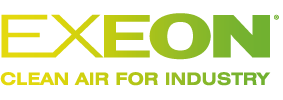Persistent Organic Pollutants Dust Extraction

POPs - The Regulations
Persistent organic pollutants (POPs) are poisonous chemical substances that break down slowly and get into food chains as a result. The manufacture and sale of these are now banned. However, they are widely present in both the textiles and foam of domestic seating.
The new POP regulations require separate handling of specific waste streams to ensure these go to incineration and not landfill, and the also need dust extraction systems to ensure particulate does not escape to the atmosphere during shredding at waste sites. The guidance recommends LEV to contain the dust (Environment Agency POP Guidance for Domestic Seating Section 3.7).
You must ensure that for shredding activities:
- Any plant used is located inside a building
- Appropriate measures are in place to prevent dust and other particles escaping the building
- Any fines, dust, or particulates produced by the process are sent for destruction (or irreversible transformation).
Appropriate measures to contain dust may include abated local exhaust ventilation (LEV) for both new and existing shredders, particularly where the shredder is not located in the fuel hall of an incinerator.

What have the Environment Agency said?
You must review your procedures to ensure they are compliant with the requirements set out in Annex 1 and make any changes necessary to prevent non-compliance.
Please respond to this letter to confirm your waste management activities are compliant.
You should respond no later than 31st December 2022
POPs - How Exeon Can Help
LEV is recommended by the EA to help control the dust from waste processes that may contain POPs
Exeon are LEV specialists and have also been working within the waste industry for a number of years providing solutions for dust control.
Typical solutions include:
Shredding Inlet
The shredder inlet is a significant source of dust, which is created by the tipping and shredding actions. Our design recommendations will help enclose and minimise emissions from these processes, without restricting feeding via mechanical shovels or grabs.
We recommend an extraction canopy is placed around the hopper, often with Strip curtain to minimise the opening size – thus reducing the size / cost of the Extraction system.
This allows feeding of product into the hopper via a JCB or 360o loading grab. The extraction should be at high level at the rear/top to avoid extracting larger articulate, it should only extract airborne fibres.

Shredding Outlet
The outlet of the shredder is generally conveyor fed. This should be enclosed via a closed canopy to minimise dust control requirement, and extraction should be comfortably away from eddies of moving particles to prevent excess extraction of product.

Balers / Discharge Bays
Balers are often enclosed, and ensuring any openings are enclosed as far as possible is important to minimise airflow. Strip curtain can be used again to provide enclosure but allowing for undulations in the conveyor flow of product. Discharge Bays will require control, usually Exeon recommends either via Strip curtain or fast-acting doors.

Segregated Process Area
Some sites are segregating a zone for processing of POPs, including shredding. Exeon can offer a dedicated ventilation system designed to help contain and capture high dust loadings in the space, with incinerable waste locations and filter elements.
Which filtration systems does Exeon recommend for use on POPs extraction?

The Exeon Ox is a quality range of reverse-pulse cleaning dust extraction units. It uses compressed air to create a temporary reverse-flow of air to clean off the filter elements, which enable it to withstand the most demanding of conditions.
Its 3mm steel sheet bodies finished with 2-coat paint enamel gloss finish and welding rolled steel framework mean its an extremely tough unit, and is built to last.
More about the Exeon Ox

The Rhino shaker dust extractors are highly versatile, cost-effective, and efficient at safely removing ATEX dust.
The Rhino can be used on a huge range of LEV dust extractor applications and is
suited to all industrial, research, engineering, and educational situations. It is rated to ATEX Zone 22 internal as standard..


Exeon’s Bulldog is a dust extraction system suitable for background extraction with high levels of airborne contaminated dust. It uses disposable elements and is very costeffective for high air volumes at low/medium dust concentrations
More about the Exeon Bulldog
